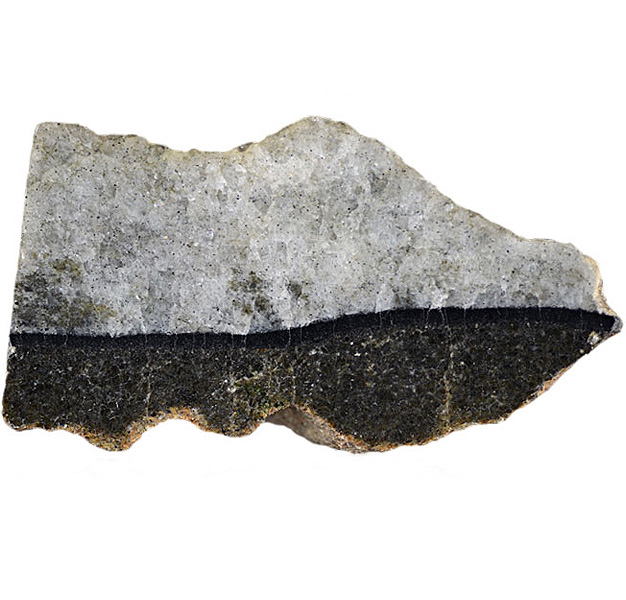
Fact sheet
This sample of gabbro from the Isle of Rum is a remnant from a deeply eroded volcano formed in the Paleogene period. The volcano is sufficiently deeply eroded on Rum that the magma chamber is visible in the hillsides, and exhibits spectacular layering on many scales, from metres to microns. The layering reflects the changing local composition of the magma as it crystallised, and is by far the best location in the UK (and one of the best in the world) to see such a layered magma chamber. The layers we see formed in liquid magma as crystals of different composition and settled to the bottom of the chamber. In most cases the crystals continued to grow as they settled and, following their settling, the liquid filled pore spaces, which also crystallised, resulting in complex textures that allow geologists to track the evolution of the liquid magma composition in great detail.
The magma chamber of the Rum volcano has been mapped and analysed in great detail so we know that this sample comes from the uppermost part of one of 15 rhythmically layered units at the contact between units 11 and 12 on the mountain of Hallival.
The thin section shows just how fine the layers can be. In this case, a chromite-rich seam (the opaque band to the left-hand side of the sample) lies between anorthosite gabbro (rich in plagioclase but with interstitial pyroxene) and a feldspathic peridotite (dominated by pyroxene and interstitial plagioclase).
The United Kingdom Virtual Microscope (UKVM) collection consists of igneous, sedimentary and metamorphic rocks from around the UK.
It is intended as a teaching resource, helping to tell the story of the common rock types and how they form, and reflecting the history of the UK at the margins of the continent of Europe. The collection is a series of teaching sets, for example igneous rocks from the North Atlantic Igneous Province and SW England; high-temperature metamorphic rocks from Scotland and low-temperature metamorphic rocks from Wales; and sedimentary rocks, including English limestones and sandstones.






